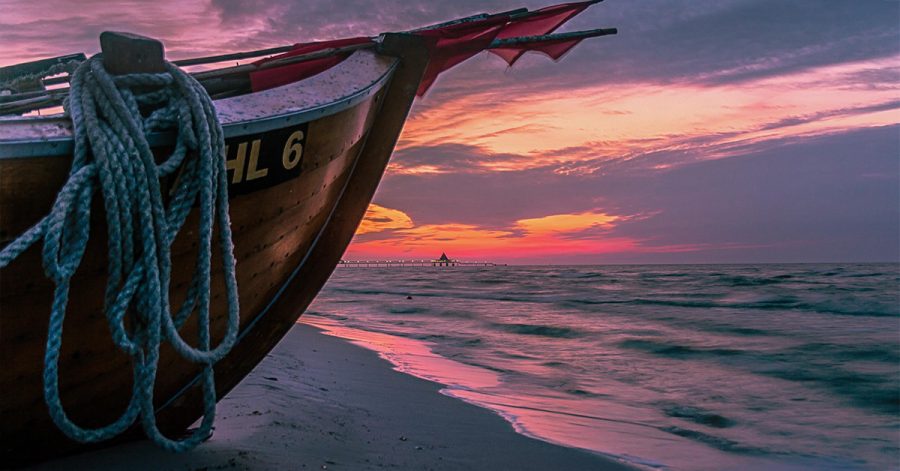
Nautical sector
We are a one-stop shop for nautical needs. We offer an important variety of products, including braids and mooring ropes, in natural and synthetic materials, braids and floating ropes, caulking ropes and materials for boat ornaments.
Nautical rope
To refer to rope in general, in the naval sphere, is very reductive: in the maritime art there are a number of names that distinguish the rigging on a vessel, according to its function. Among these, elbows and lines are differentiated by diameter and are functional for mooring; sheets are ropes useful for adjusting the angle of the sail with respect to the direction of the wind; the halyard is a cable that lifts the sails; the line is characterised by being a small-diameter cable (generally under 5 mm).
Il sartiame tessile, rispetto ai cavi in acciaio, risulta più leggero a parità di resistenza a trazione, più resistente al salino e più pratico per la conservazione sotto coperta.
Textile rigging, compared to steel ropes, is lighter for the same tensile strength, more resistant to salt and more practical for storage below deck.
Rope is the most classic and traditional of the ropes with which it is possible to equip a boat; it is composed of 3 or 4 timbers with or without kernels (double twine), generally in synthetic fibre or, to preserve a more traditional style, in natural fibre, such as linen, jute, sisal and manila (abaca).
In the nautical sector, ropes are generally used as mooring lines or wings because, although they can withstand lower loads and have greater elongation than braids, they still retain their softness even after prolonged use.
Linen, sisal and manila ropes are the ideal choice for outfitting a vintage boat; the classic look combined with natural materials gives the boat an old-world charm.
However, synthetic materials have physical characteristics that are difficult to match with natural materials, both in terms of handling and stability over time.
Among these materials, polypropylene, in particular, is suitable for floating ropes, as its density is lower than that of water.
Il sartiame tessile, rispetto ai cavi in acciaio, risulta più leggero a parità di resistenza a trazione, più resistente al salino e più pratico per la conservazione sotto coperta.
Textile rigging, compared to steel ropes, is lighter for the same tensile strength, more resistant to salt and more practical for storage below deck.
Rope is the most classic and traditional of the ropes with which it is possible to equip a boat; it is composed of 3 or 4 timbers with or without kernels (double twine), generally in synthetic fibre or, to preserve a more traditional style, in natural fibre, such as linen, jute, sisal and manila (abaca).
In the nautical sector, ropes are generally used as mooring lines or wings because, although they can withstand lower loads and have greater elongation than braids, they still retain their softness even after prolonged use.
Linen, sisal and manila ropes are the ideal choice for outfitting a vintage boat; the classic look combined with natural materials gives the boat an old-world charm.
However, synthetic materials have physical characteristics that are difficult to match with natural materials, both in terms of handling and stability over time.
Among these materials, polypropylene, in particular, is suitable for floating ropes, as its density is lower than that of water.
Nautical braid
Textile rigging also includes nautical braid, which, unlike rope, has a tubular appearance. Ropes or braids are used according to requirements, and the choice of material is crucial. Usually, in pleasure boating, synthetic fibre braids are used, which provide excellent salt resistance, manageability, tensile strength and low elongation. Polyester fibres, on the other hand, are characterised by their high tenacity, discrete lightness and resistance to wear; on the other hand, they are less resistant to abrasion, creases and chemical and physical agents.
Braids generally consist of an inner core and an outer braid, each of which has its own specific function: the braid must provide a secure grip and must resist abrasion, while the core, which is not externally visible, is responsible for tensile strength, fatigue resistance and elongation.
Special fibres, e.g. Kevlar® and Dyneema®, are used as the inner core of the braid to increase its flexibility and strength, while materials with low elongation coefficients are required to withstand fixed loads such as in shrouds and stays.
When high levels of tensile strength are desired, double braids consisting of two layers of outer braid are used, which also provide good resistance to rubbing in the many pulleys and diverters.
Finally, for mooring, the preference is for high tenacity ropes that are elastic, easy to handle, and resistant to abrasion; but also characterised by a softness that is maintained after long exposure to sea water.
Braids generally consist of an inner core and an outer braid, each of which has its own specific function: the braid must provide a secure grip and must resist abrasion, while the core, which is not externally visible, is responsible for tensile strength, fatigue resistance and elongation.
Special fibres, e.g. Kevlar® and Dyneema®, are used as the inner core of the braid to increase its flexibility and strength, while materials with low elongation coefficients are required to withstand fixed loads such as in shrouds and stays.
When high levels of tensile strength are desired, double braids consisting of two layers of outer braid are used, which also provide good resistance to rubbing in the many pulleys and diverters.
Finally, for mooring, the preference is for high tenacity ropes that are elastic, easy to handle, and resistant to abrasion; but also characterised by a softness that is maintained after long exposure to sea water.

